This reconstructed church in a leafy suburb of Bergen is easy to visit thanks to the city's Light Rail system. Here's what you need to know about the beautiful Fantoft Church.
This exquisite stave church in the suburbs of Bergen may look ancient, but appearances can be deceiving.
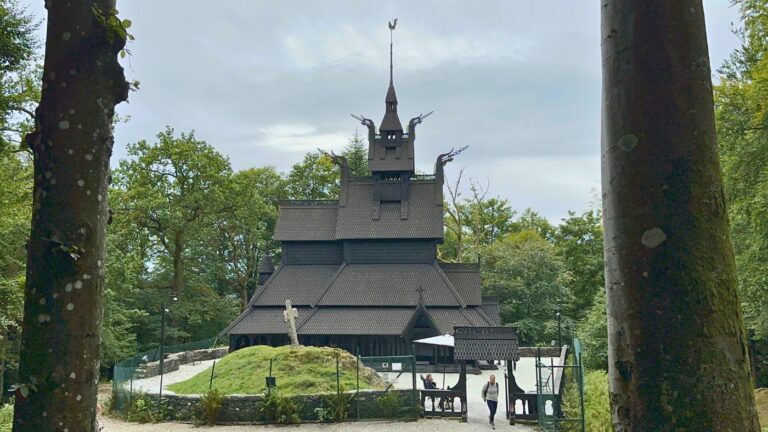
Although often promoted as one of the easiest stave churches to visit in Norway, Fantoft’s story is one of relocation, reinvention, and reconstruction.
Many of Norway’s surviving stave churches are found in remote mountain valleys and isolated fjord communities. They were originally built outside village centres and often remain hard to reach without a car.
That’s what makes Fantoft special. It’s one of the few stave churches accessible by public transport. Thanks to Bergen’s Light Rail, it can be visited on a simple trip from the city centre.
From Fortun to Fantoft
The story of Fantoft Stave Church begins in the village of Fortun, which lies near Skjolden at the eastern end of the Sognefjord.
Surrounded by towering peaks and deep valleys, Fortun today is a scenic stop for tourists exploring Norway’s western fjords. But in the 12th century, it was one of the most remote corners of Europe.
Despite its isolation, Fortun was not untouched by broader cultural changes. By the middle of the 1100s, Christianity had taken firm root across Norway, and there was a growing need for churches, even in far-flung settlements like this one.
Around that time, a wooden stave church was built in Fortun—an elegant and complex piece of architecture that reflected both new religious ideals and older building traditions.
The church stood in Fortun for more than 700 years. But by the late 1800s, it had fallen out of use and faced the threat of demolition.
In an era when industrialisation and modernisation were reshaping Norwegian society, many older wooden churches were being replaced with newer stone or brick structures.
In an effort to preserve Norway’s medieval heritage, a Bergen-based consul purchased the church and arranged for it to be dismantled, shipped along the coast, and reassembled in a wooded area near his home.
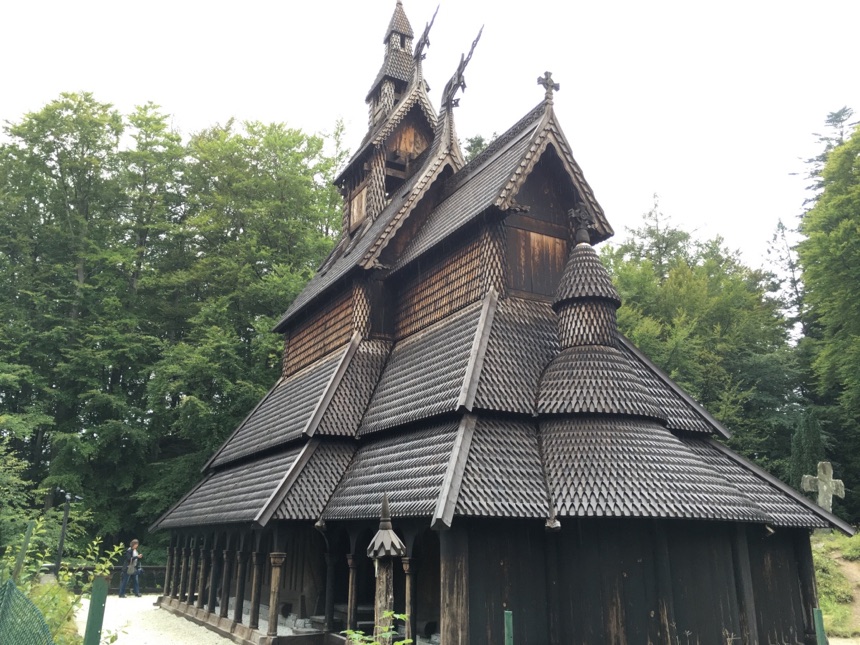
However, this early act of preservation was not as faithful as it may seem. The relocated building was reassembled in 1883 with significant modifications.
Rather than reconstruct the Fortun church exactly as it was, the team used elements of the famous Borgund stave church as inspiration.
The result was a hybrid design: part historic salvage, part creative homage. Even in its first Bergen incarnation, the Fantoft stave church was not a pure replica.
The decision to emulate Borgund’s iconic architecture reflects its status as Norway’s most complete and recognisable stave church.
The Fantoft Fire
Then, in 1992, disaster struck. On a summer night in June, the church was destroyed by fire in an act of arson that shocked Norway.
The blaze marked the start of a disturbing trend of church burnings associated with the country’s black metal music scene.
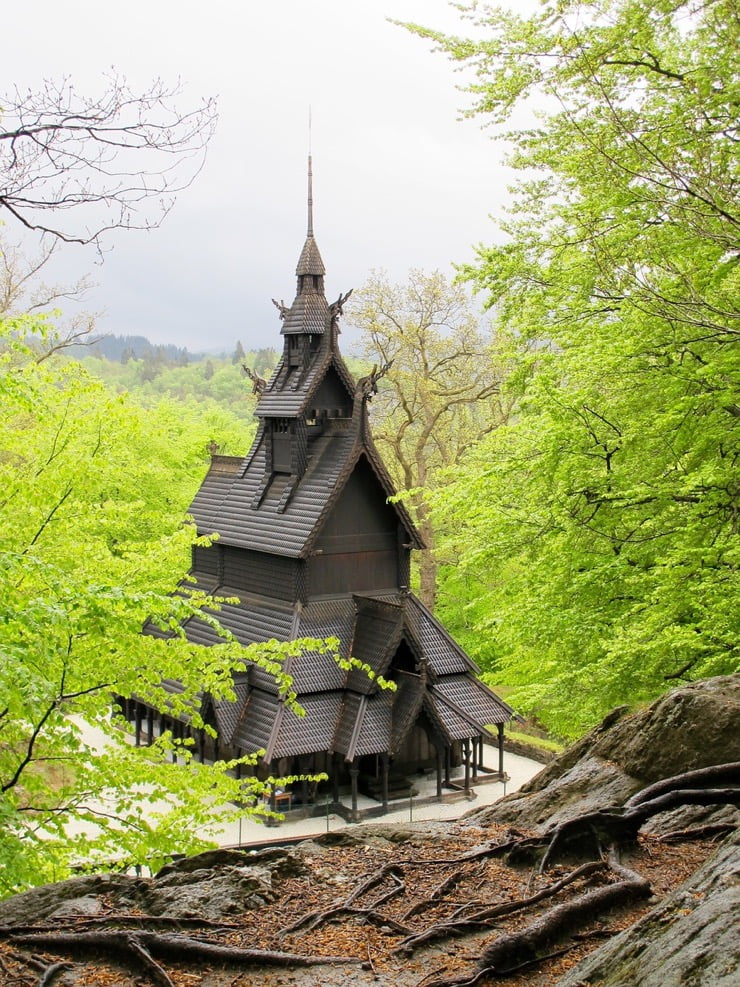
Although no one was convicted specifically for the Fantoft fire, black metal musician Varg Vikernes was later convicted for several similar crimes and had publicly expressed admiration for the attack.
A year after the fire, he used a photo of the charred remains on the cover of one of his albums, adding to the notoriety of the event.
The Fantoft fire became a symbol of a dark chapter in Norway’s cultural history, one that still attracts interest from around the world.
The Reconstruction
The church that stands at Fantoft today is a reconstruction completed in 1997. Craftsmen relied on photographs, sketches, and surviving fragments to recreate the design as accurately as possible.
Traditional materials and methods were used throughout the build. Wooden pegs were used instead of nails, and the entire structure was built by hand using 400-year-old pine. Although it is only a few decades old, the new building feels appropriately historic.
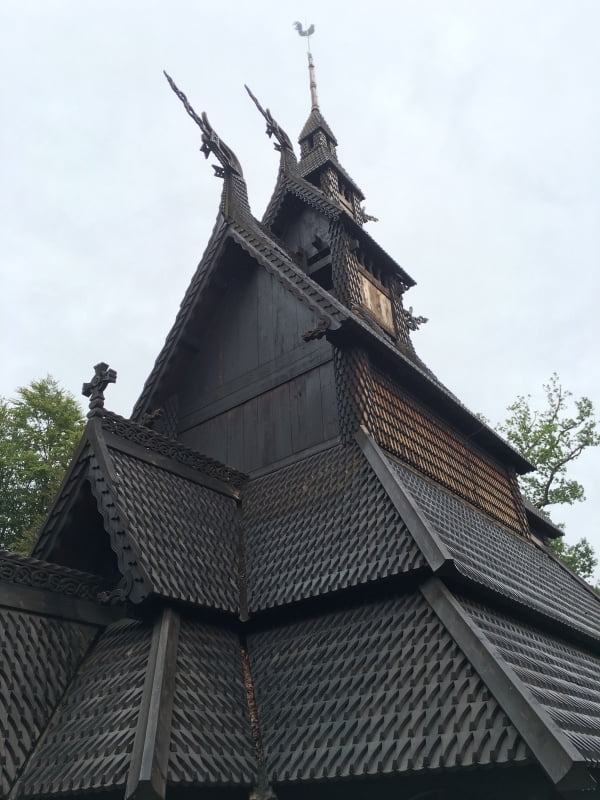
The exterior is striking. Its dark, tar-treated wood is typical of stave churches and helps protect the timber from the elements. Stylised dragon heads rise from the gables, a nod to the pagan symbolism that lingered in early Norwegian Christianity.
These carvings were believed to ward off evil spirits and reflect the cultural overlap between Norse beliefs and the new Christian faith at the time the original stave churches were built.
The Church Today
A walk inside the church reveals an intimate and atmospheric space. Dim lighting and a narrow nave create a sense of stillness. A small altar stands at the far end, with carved wooden columns and arches framing the view.
A few original features survived the fire and were incorporated into the new building, including a medieval stone altar cross and a ‘wish stone’ from the original site. These quiet details add an unexpected layer of authenticity to an otherwise modern structure.
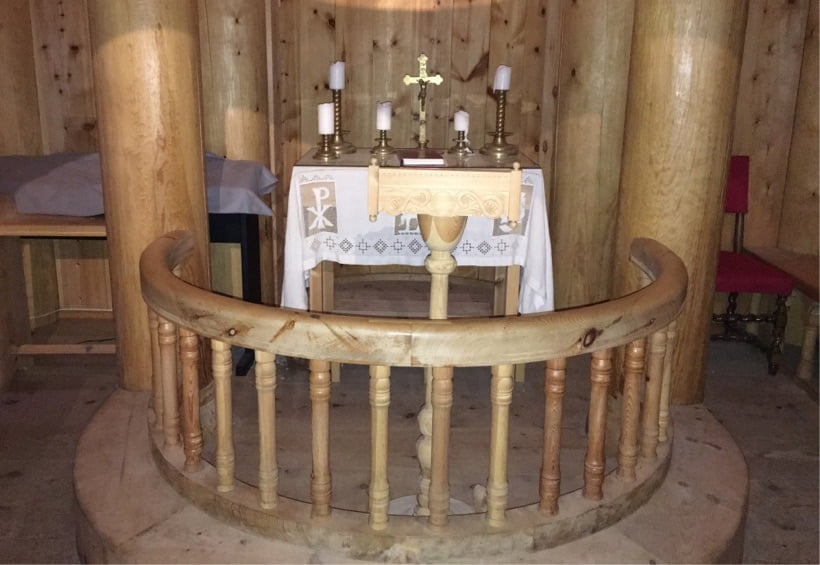
Outside the church, visitors can also see an original stone cross from Tjora near Stavanger. This medieval monument was relocated here much like the church itself and adds to the site’s historical ambiance.
How to Visit Fantoft Stave Church
Fantoft stave church is open to visitors from early May to mid-September. During the off-season, the site can still be admired from outside the perimeter fence. A viewing platform offers a good vantage point if the church is closed.
If you want to step inside and explore the interior, there is a small entrance fee, but the visit is included for holders of the Bergen Card. One small caveat: the last time I visited only Norwegian debit cards or cash are accepted for payment.
This is very unusual for Norway and may catch some foreign tourists by surprise, although it may well have changed by now.
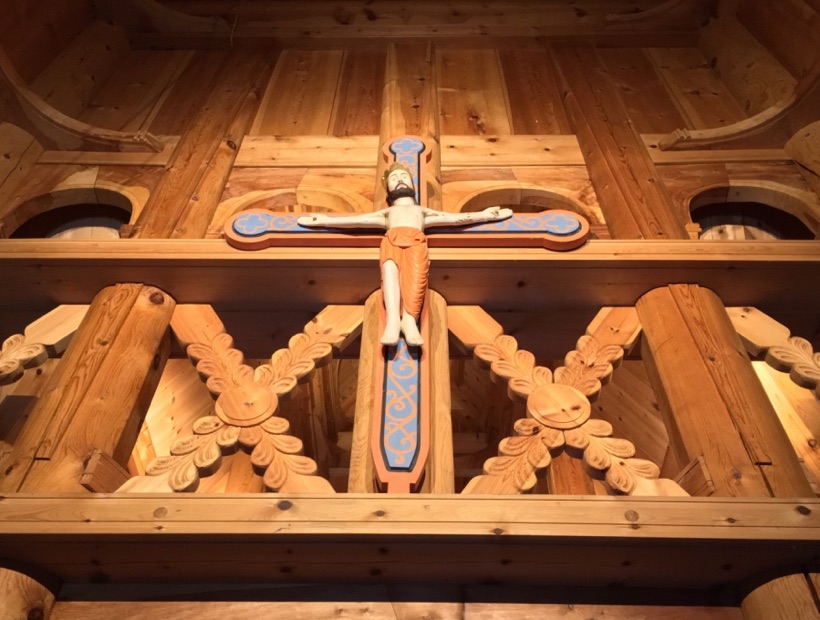
To get there, take Bergen’s Light Rail to either Paradis or Fantoft station. Both stops are a short walk away, although the route involves a fairly steep climb.
Of the two, Fantoft station offers the easier approach. While the walk is brief, it may be a challenge for those with mobility issues.
What They Say
Travel review site Tripadvisor praises Fantoft’s serene setting and accessibility, noting that “it sits on a small hill overlooked by trees so this makes it a really peaceful site to visit, being a convenient short 15–20 minute walk up a small hill”.
In the international travel blog Travel Caffeine, the author describes the woodland location feeling “like you're stumbling upon a secret fairytale location hidden in the forest.”
A Radisson Hotels cultural blog from May 2025 highlights its medieval origins and faithful rebuild, calling it an “architectural wonder” and “a must‑visit for anyone exploring the region.”
Fantoft may not be an original stave church in the strictest sense, but it is one of the best ways to experience the look and feel of Norway’s medieval wooden architecture without venturing into the countryside.
It offers a fascinating blend of historical preservation, cultural memory, and modern craftsmanship. For visitors to Bergen, it’s well worth the journey.


Thank you for all the good information about Norway, my home country we left when I was 14yrs old.
My wife and I visited the Hopperstad Stave Church in August 2017. It was an amazing experience. So very glad we took the time driving from Balastrand to Bergen to stop for a bit. Hadn’t planned stop to necessarily, very grateful that we did. Strolled around the Church in Bergen on fly out day. Beautiful.
Recently returned from a terrific trip to Norway. LOVED the Stave Church in Fantoft. Not mentioned it the Beautiful grounds. Mossy covered trees and rocks in quiet spots surround the church. We were early and had a half our to wander around the paths. It was almost my favorite part, but of course the church itself is marvelous. The young guides at the gate were knowledgeable and pleasantly answered our questions about the church, the history, the construction and reconstruction methods etc. This was a great experience.
Visited October 2024. I could use my US Apple Pay for entrance. I also took the city bus for the trip from Bryggen. Beautiful church and setting. There are also historical information posts about the church right behind the entrance booth on the inside
Thanks for the update!